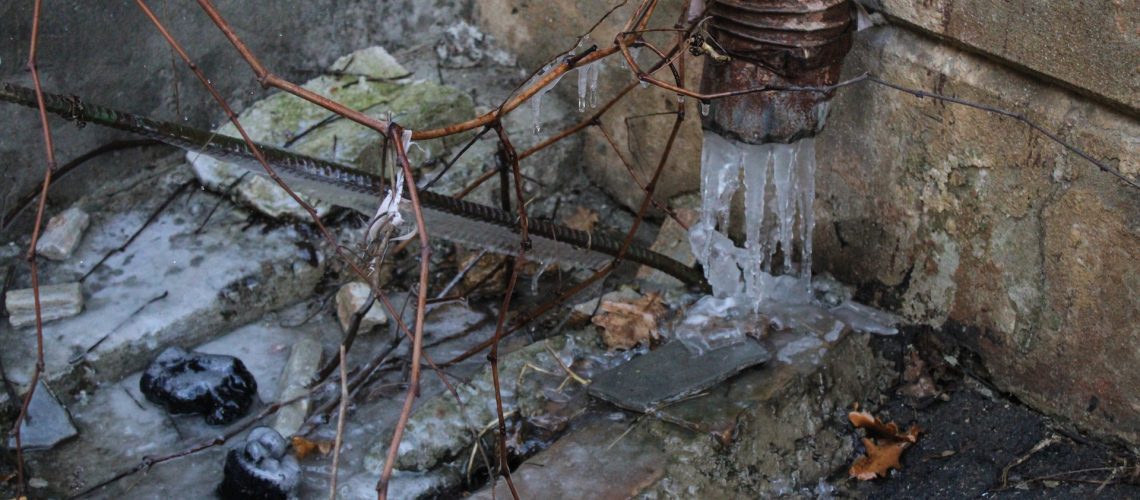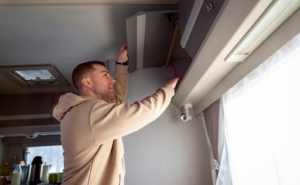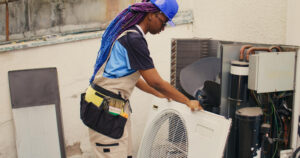Menu

Preventing Frozen Pipes: Essential Tips for Canadian Homeowners
Winter in Canada brings picturesque landscapes and festive celebrations, but it also presents some challenges for homeowners. One common yet often overlooked issue is the risk of frozen pipes, which can lead to costly damages and inconveniences. In this blog post, we will provide essential tips and expert guidance from Bromac Mechanical’s skilled plumbing professionals on how to prevent frozen pipes in your Canadian home and safeguard your property during the winter months.
Understanding the Risks of Frozen Pipes
When the water inside your home’s pipes freezes, the resultant ice expands, exerting significant pressure on the pipes themselves. If left unchecked, this pressure can cause pipes to burst, resulting in expensive repairs and water damage to your property. Additionally, as the ice expands, it can obstruct water flow, creating inconvenience and potential hazards. Therefore, it is crucial to take preventive measures to protect your pipes during the cold season.
Identifying Vulnerable Pipes
Some pipes within your home may be more vulnerable to freezing than others. These typically include:
1. Outdoor plumbing connections, such as hose bibs and sprinkler systems.
2. Pipes located in unheated or poorly insulated areas like attics, basements, crawl spaces, and garages.
3. Pipes along exterior walls or in cabinets where they have less exposure to warm indoor air.
By identifying these high-risk pipes, you can make targeted efforts to protect them from freezing.
Preventing Frozen Pipes: Essential Tips
Follow these essential tips to keep your pipes safe from freezing during the winter months:
1. Insulate Vulnerable Pipes
Proper insulation is crucial in protecting high-risk pipes. Use pipe insulation, heat tape or heat cables to wrap vulnerable plumbing, paying special attention to the areas with limited exposure to heat sources. In extreme weather conditions, you can also add extra insulation, such as fibreglass or foam board, to maintain optimal pipe temperatures.
2. Maintain a Consistent Indoor Temperature
Maintaining a consistent indoor temperature of at least 15°C (59°F) throughout winter is essential for preventing frozen pipes. Don’t significantly lower the temperature at night or when you’re away from home, as doing so could inadvertently increase the risk of freezing.
3. Circulate Warm Air
Promote warm air circulation in colder areas of your home by opening cabinet doors below sinks and near exterior walls. This step will help expose your pipes to warm indoor air, reducing the likelihood of freezing.
4. Seal Gaps and Cracks
Inspect your home for gaps, cracks, or openings that allow cold air to enter and come into contact with your pipes, particularly in basements, crawl spaces, and along exterior walls. Seal these openings with weatherstripping or caulk to minimize cold air infiltration.
5. Disconnect and Drain Outdoor Hoses
Prior to the onset of freezing temperatures, disconnect garden hoses, and drain any remaining water from outdoor faucets and hose bibs. If possible, shut off the indoor valve controlling water flow to these outdoor connections and leave the outdoor spigot open to allow any residual water to drain.
6. Keep a Steady Drip
During periods of extreme cold, allow a slow and steady drip from faucets connected to pipes with a higher risk of freezing. The continuous water flow will help maintain pressure within the pipes, lowering the chance of pipes bursting.
7. Install Pipe Monitoring Devices
Consider investing in pipe monitoring devices or smart home systems that can detect drops in temperature or water pressure, alerting you to potential freezing risks. These devices can provide an early warning system, enabling you to take quick action and prevent pipe damage.
What to Do If Your Pipes Freeze
Despite proactive measures, pipes may occasionally freeze. If you suspect your pipes have frozen, follow these steps to minimize damage and restore water flow:
1. Turn off the main water valve to prevent potential flooding if the pipe bursts.
2. Open the faucet connected to the frozen pipe to relieve pressure and facilitate thawing.
3. Use a hairdryer, heat lamp, or space heater to gently warm the affected area, starting from the faucet and working your way toward the frozen section. Do not use open flames, as they can damage the pipes and pose fire hazards.
Conclusion
Preventing frozen pipes is a crucial aspect of winter home maintenance for Canadian homeowners. By following the above tips and being proactive in safeguarding your plumbing system, you can significantly reduce the risks of pipe damage and costly repairs.
Should you require professional help with insulating your pipes, detecting potential issues, or dealing with frozen pipes, the skilled team at Bromac Mechanical is here to assist. Contact us today for expert advice, prompt residential plumbing services, and peace of mind during the winter months.


